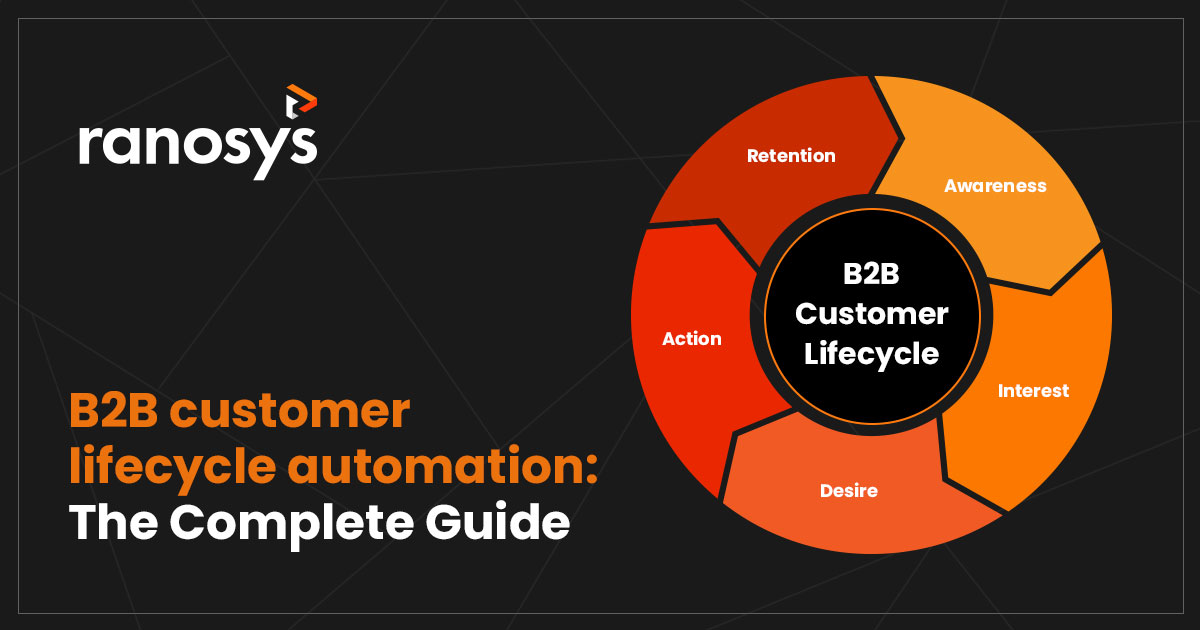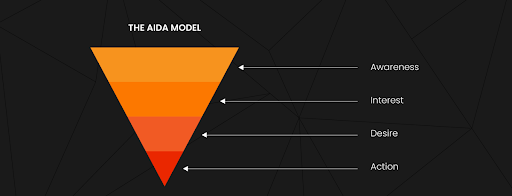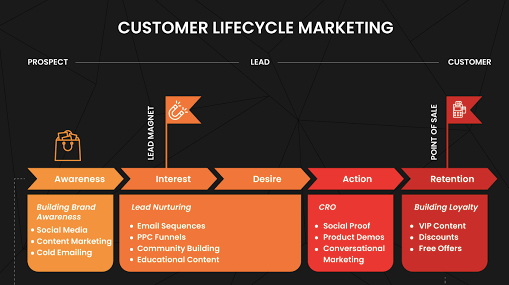Stage #1: Awareness
A stage where your lead becomes aware of your brand.
At this stage, a potential customer has just come across your business and wishes to learn more. Irrespective of the medium employed- social media, cold emailing, content marketing, or Google, now is the time when you introduce your brand in the best possible light.
At this phase, customers have no apparent intention of what they want to do- initiate a purchase or browse around and learn more about your products or services. However, you must grab their attention and spark some interest to push them further down the funnel.
Here is how you must encourage your prospect:
Introduce your brand: You must communicate your USPs to the new lead, probably when they’re browsing your website. At this point, they might be connecting with your competitors as well. So, outline facts and strengths that help you gain an edge over the competition.
Gather customer preference data: It is essential that while you focus on developing a brand image, you must learn as much as you can about your potential lead. Generate customer records for all your visitors and keep them updated. Collect information without feeling too intrusive.
Be clear with your expectations: A lead must always know what they can expect from a brand. So, let your prospects know what they can expect from you, and tailor a relationship with them. It will help you move this visitor onto the next stage faster.
Turning leads into profitable leads: Generating awareness and collecting data is great, but it will only take you so far. You need to make sure your customers look at you at all times. So, once your lead magnet is ready, the following are some ways you can connect with your visitors.
- Pop-ups: When rightly used and placed, pop-ups can generate tons of leads.
- Gated content: You might have visited websites that display only some part of the article and keep the rest of it gated or locked to either leave an email address or pay to gain access.
- Chatbots: AI-bots feel less invasive, more creative, and reliable than standard pop-ups.
- Campaigns: Run campaigns to target new prospects and build brand awareness. You can run these ads on social media or Google and drive back opportunities to your website.
Stage #2: Interest
A stage where you educate a curious prospect about your products and services.
At this stage, your visitors aren’t entirely acceptable to your brand. They are still in the learning phase, browsing through your products and services and gathering all the information they can. So, as a B2B marketer, your focus should be on educating and nurturing them.
Here is how you must encourage your prospect:
Newsletters: Newsletters are the golden geese for email marketing campaigns. They possess infinite power and can boost conversions if appropriately used. With content like case studies, infographics, blogs, eBooks, and articles- newsletters direct your readers to your website, where they can continue their conversion journey. It provides them with industry insights that’ll come in handy and establish your supremacy for the said product or service. However, don’t try to spam your subscribers because otherwise, they would unsubscribe from your mailing list.
Events & Webinars: Are you conducting an online event or webinar that your prospects might be interested in? Well, then all you have to do is send them an email regarding the same and ask to book a slot. Events and webinars that include sessions from prominent speakers are a great way to indicate your service value.
Lead Nurturing Campaigns: Such campaigns should focus on creating a personalized connection with prospects. They should add weightage to a reader’s knowledge base and make them aware of your brand. You can send automated customized emails to a particular region. Try not to forward emails that make them unsubscribe from your mailing list.
Stage #3: Desire
A stage where you have an exciting prospect ready to convert, and all you have to give them is an opportunity to do so.
This stage represents your last winning seconds just before you’re about to cross the line. So, you’ve charmed your prospects. You’ve got them engaged and interested in your products and services. Now you have to open the doors of conversion for them.
Here is how you must encourage your prospect:
Lead triggering campaigns: Unlike the previous campaigns when you were worried about how to get them interested in your brand, here you need to look out for signs that show prospect conversion intentions. Price inquiries, free trial sign-ins, demo requests, free sample requests, and cart building and abandoning are some actions that specify that the prospect is ready to convert.
To enjoy the fruits of your labor, you can create automated emails regarding demos and sample requests, and abandoned carts. Now, remember, you need to add authoritative content like social proofs, ratings, awards, or reviews to seal the deal.
Customer service-led chats: Although you might have let your chatbot answer initial customer queries, this critical stage requires your customer service team. By automating conversations, you can be sure that all questions directly reach the right customer service team.
Stage #4: Action
A stage where your prospect is ready to become your customer via a completed purchase.
It is a stage that brings money into your pockets. It is where prospects finally act, which is usually represented by a purchase. However, you need to make this transition from prospect to customer smooth, easy, seamless, and enjoyable.
Here are some strategies that will help you convince your leads to purchase something finally.
Send engaging order confirmation emails: Remember this, out of the tens and thousands of brands out there, a customer has chosen your services. So, you need to make sure that they feel positive about this purchasing experience and never turn back to your competitors. These order confirmation emails, although automated, need to forge that special long-term bond with your customers.
You can create a theme copy for all order confirmations using a marketing automation platform. Moreover, you can add some additional products or services that you think might come in handy to your customers in this email to let them know that you can supply these as well.
Enforce Customer Welcome Programs: Such kits are a great way to connect with your new customers, understand their expectations, give them a clear picture of your processes, and ensure a smooth transaction. You can designate a team that’ll check in with them every once in a while; you can educate them about the resources available for a particular product or service and smoothen the entire customer onboarding process.
After some time, ask for a review or feedback: Once a customer has started using your product or service, you can always ask them to review it. If they’ve had a delighted experience, they will love to do it. Alternatively, you can also request them for feedback on how their product journey has been and recommend it to their peers. Such information builds your credibility in the market and boosts conversion ratio for new prospects in the future. They serve as social proof for your business and help you earn the vote of confidence.
Stage #5: Retention
A stage where you can turn your customers into your brand advocates.
This stage corresponds to both the ending and the beginning of a B2B customer lifecycle. You have satisfied customers who’ve thoroughly enjoyed your services, but you need to prevent them from trying out your competitors. So, you must do everything in your power to deliver impressive customer experiences and keep them associated with you.
Loyalty Programs: These plans celebrate customer loyalty, and it is a great way to appreciate their contribution. You can upsell your products and services in such programs and give them a reduced price for a better package. You can introduce referral bonuses and reward your customers depending on the referral numbers.
Renewal discounts or alerts: You can send your customers automated emails regarding their ending subscription to show that they are always on your mind. You can give renewal discounts as well to entice them into a re-purchase of a service or product.
Early Access or VIP Content: You can forward automated messages regarding some market insights that you know will be helpful for your customers. You can make them feel exclusive for their association with you and show that you care about them. You can also send emails for VIP content regarding product launches or service extensions.
The future of B2B customer lifecycle automation
Irrespective of your B2B business genre, the customer lifecycle is one blueprint that you’ll always need. So, the only way you can engage better with your leads using the right content and at the right time is via marketing automation.
Your customers mean more than just money-making individuals; they are your assets. Therefore, building a long-term relationship with them should be your #1 priority. However, with the rapidly changing customer demands, it might become impossible for you to meet all their needs and deliver unique experiences. And that is why you must automate your B2B customer lifecycle marketing. This way, you can drive better results and boost business growth.







